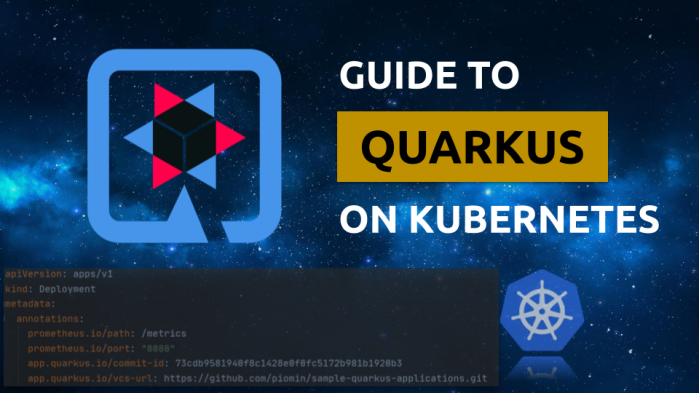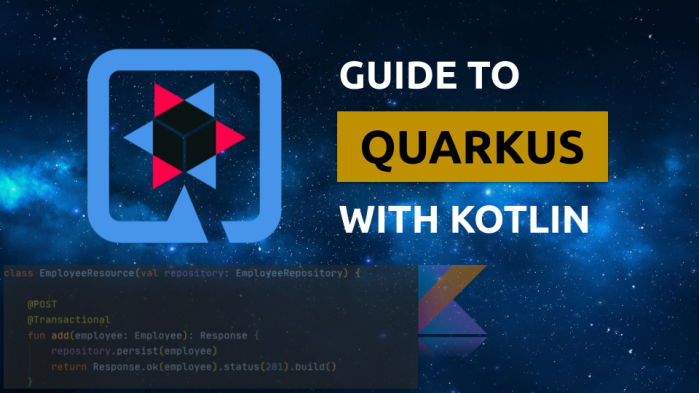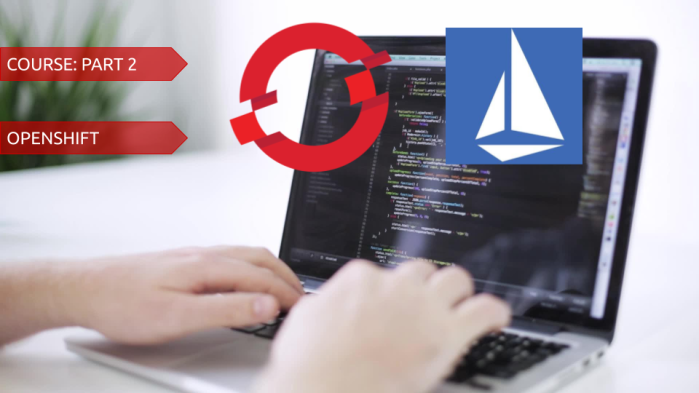Quarkus is a framework for building Java applications in times of microservices and serverless architectures. If you compare it with other frameworks like Spring Boot / Spring Cloud or Micronaut, the first difference is native support for running on Kubernetes or Openshift platforms. It is built on top of well-known Java standards like CDI, JAX-RS, and Eclipse MicroProfile which also distinguishes it from Spring Boot or Micronaut. Continue reading “Quick Guide to Microservices with Quarkus on Openshift”
Month: August 2020
Guide to Quarkus on Kubernetes
Quarkus is usually described as a Kubernetes-native Java framework. It allows us to automatically generate Kubernetes resources based on the defaults and user-provided configuration. It also provides an extension for building and pushing container images. Quarkus can create a container image and push it to a registry before deploying the application to the target platform. It also provides an extension that allows developers to use Kubernetes ConfigMap as a configuration source, without having to mount them into the pod. We may use fabric8 Kubernetes Client directly to interact with the cluster, for example during JUnit tests. Continue reading “Guide to Quarkus on Kubernetes”
Guide to Quarkus with Kotlin
Quarkus is a lightweight Java framework developed by RedHat. It is dedicated for cloud-native applications that require a small memory footprint and a fast startup time. Its programming model is built on top of proven standards like Eclipse MicroProfile. Recently it is growing in popularity. It may be considered as an alternative to Spring Boot framework, especially if you are running your applications on Kubernetes or OpenShift. Continue reading “Guide to Quarkus with Kotlin”
Intro to OpenShift Service Mesh
OpenShift 4 has introduced official support for service mesh based on Istio framework. This support is built on top of Maistra operator. Maistra is an opinionated distribution of Istio designed to work with Openshift. It combines Kiali, Jaeger, and Prometheus into a platform managed by the operator. The current version of OpenShift Service Mesh is 1.1.5. According to the documentation, this version of the service mesh supports Istio 1.4.8. Also, for creating this tutorial I was using OpenShift 4.4 installed on Azure. Continue reading “Intro to OpenShift Service Mesh”
Development on Kubernetes: Choose a platform
An important step before you begin the implementation of microservices is to choose the Kubernetes platform used for deploying your applications during development. In this article, I’m going to describe several available solutions. Continue reading “Development on Kubernetes: Choose a platform”
Guide to building Spring Boot library
In this article, I’m going to show you how to create and share your own custom Spring Boot library. If you decided to build such a product you should follow some best practices recommended by Spring Team. It’s a little bit more complicated than creating a plain Java library. Finally, you should publish your artifacts somewhere to share it with the community. Probably you need to obtain positive feedback from the community, so you should think about adding some extras. I’m also going to describe them. Let’s begin! Continue reading “Guide to building Spring Boot library”
Development on Kubernetes: IDE & Tools
An important step before you begin the implementation of microservices is to configure your development IDE and install a set of tools that simplifies integration with Kubernetes. In this article, I’m going to describe the most popular of those tools. Continue reading “Development on Kubernetes: IDE & Tools”






